Up Next

Not everybody agreed with the direction that Racing Point took in cloning the Mercedes W10 last year and it earned the nickname of the ‘Pink Mercedes’ for a very good reason.
But whatever the rights and wrongs of that, what is now known as Aston Martin soaked up the differences in how a low-rake concept worked compared to its old high-rake design. This means that it’s probably the only team that has relevant on-track data from both solutions to benchmark against the new narrow floor and other aerodynamic rule tweaks.
This could put it in a very good place when it comes to making fundamental development direction decisions. The new Aston Martin AMR21 suggests the team certainly has some clear ideas.
This is our story. A spirit that never quits.
Aston Martin, it’s in our blood.
#IAMF1 pic.twitter.com/3HhlfPcOdv
— Aston Martin Cognizant F1 Team (@AstonMartinF1) March 3, 2021
That change in concept served the team very well. Overall, the consistency and performance improved, with bad luck costing Racing Point third place in the constructors’ championship. Yes, McLaren deserved it, but the team lost some big results through no fault of its own.
Technical director Andrew Green says the new car is “100% Aston Martin”. I’m not quite sure how accurate that can be given it uses a Mercedes power unit mated to a Mercedes gearbox, mated to the Mercedes rear cash structure, mated to the Mercedes 2020 rear suspension! But lots of teams are doing this and the rules allow it even though it’s a fair chunk of the car.
The tokens have been spent on the monocoque. Green won’t say exactly where and the regulations mean two tokens are required for each of the front and the rear of the monocoque, which means it could only afford to choose one half to change.
If it was the rear then it might be a requirement for packaging the new for 2021 Mercedes PU. Mercedes has talked about new technology to the hybrid package, which might also be where Mercedes spent its tokens. It will also be interesting to see if Williams has had to do the same. But there’s another possibility, which we will come to later.
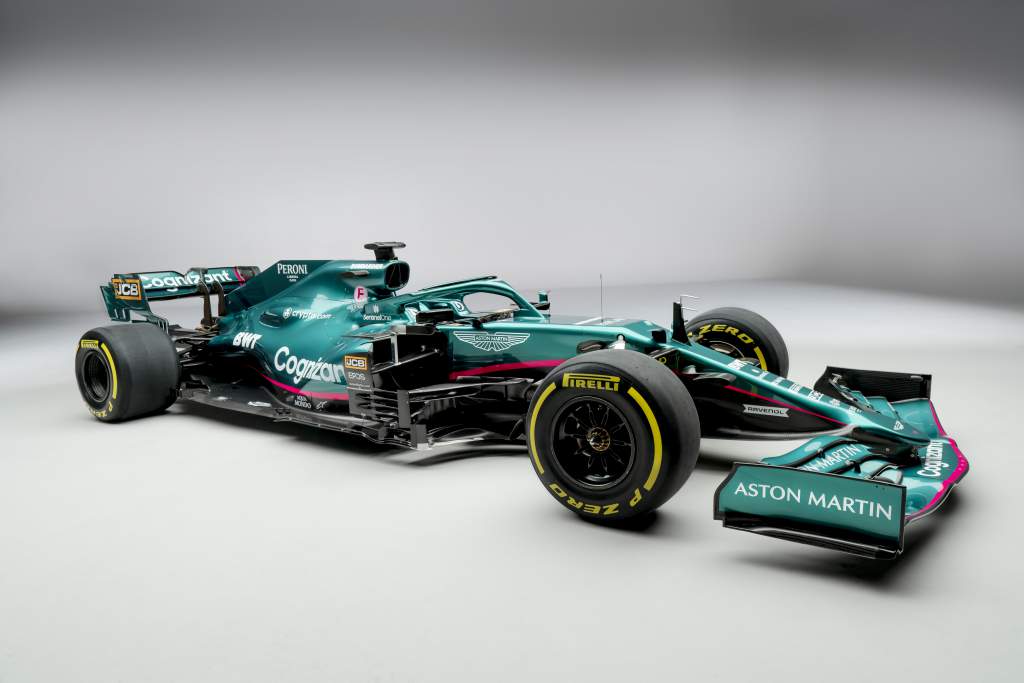
The car launch was a major step forward from what some of the other teams have shown. The car really was the star of the show, with input from the drivers and the upper management. It’s also nice to see them all very proud of the association with Aston Martin.
Looking at the car in detail, as Green said it’s more evolution than revolution. Other than researching the aerodynamic rule changes, it’s all about optimisation of each and every part of the body surface, wing surface, nut, bolt, pipe and wire.
There are small returns in performance and/or reliability in addressing and integrating all of these, but there are some subtle changes.
The nose looks very similar to last year’s version, but I’m pretty sure the cape under the nose, which we can’t really see, will have received some attention. As this is an aero surface it is up for grabs and doesn’t require any token spend.
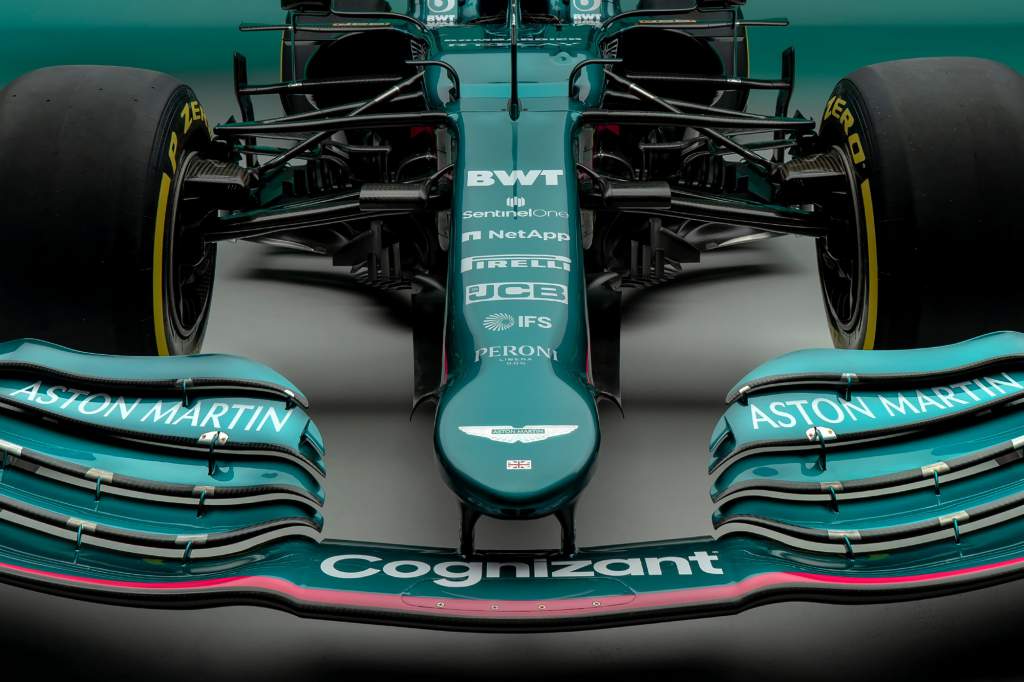
Because the teams are trying to produce more downforce from the front corner of the underfloor, the outer rear corner of the cape is an area that can influence the flow to the bargeboards and, in turn, influence this part of the underfloor.
The front wing comparison shows that the trailing edge of the rear flap has been altered to give slightly higher load about a third of the way out from the inside of the front tyre. Then it looks like the flap drops down to give similar outwash.
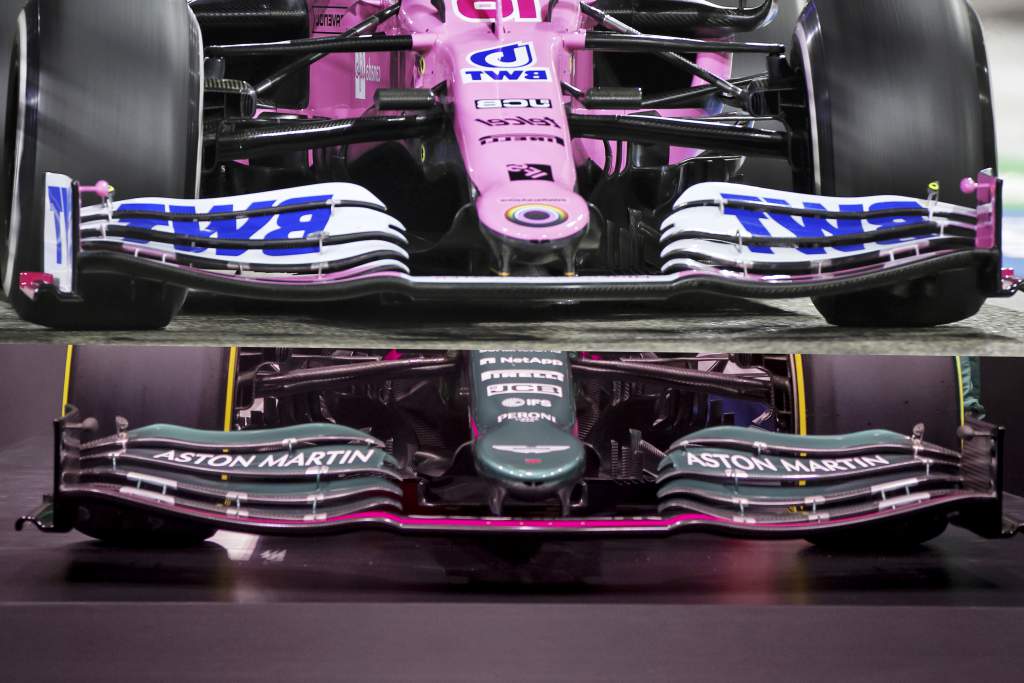
The front suspension looks very similar to its predecessor. However, the integration of the top wishbone to chassis/nose surface has been optimised.
All of these small touches reduce the chances of airflow separation, which can very easily hurt the performance of other components further downstream.
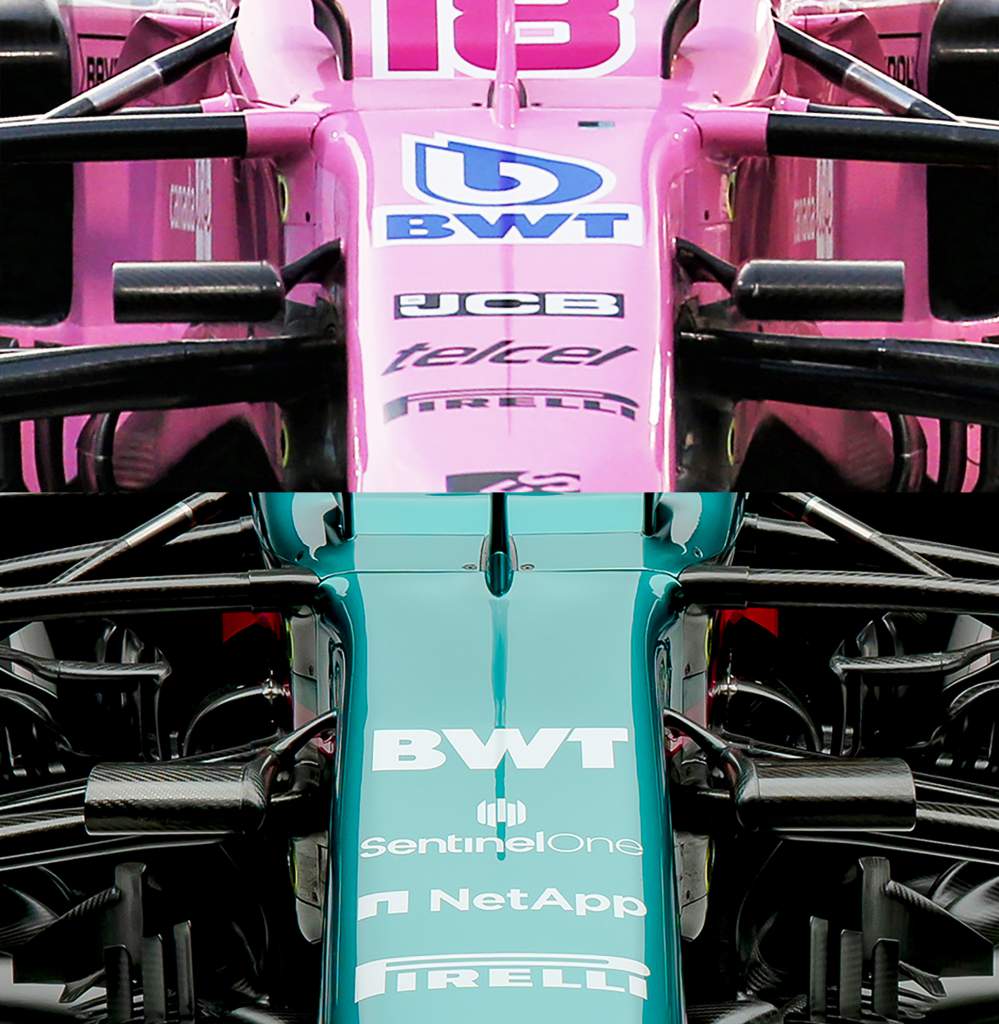
As for the chassis change, it might be because Aston Martin has dropped the side impact structure from being at the top of the sidepod inlet to halfway up the chassis.
This is similar to the Mercedes way of doing it. It will open up an opportunity for a neater, less bulbous upper leading edge to the sidepod.
Looking a bit closer at the area of the floor that has had the outer triangle cut made to it, the car as released still has some small vertical turning vanes in this area just in front of the rear tyre. It will be interesting to see how the development direction goes in this zone.
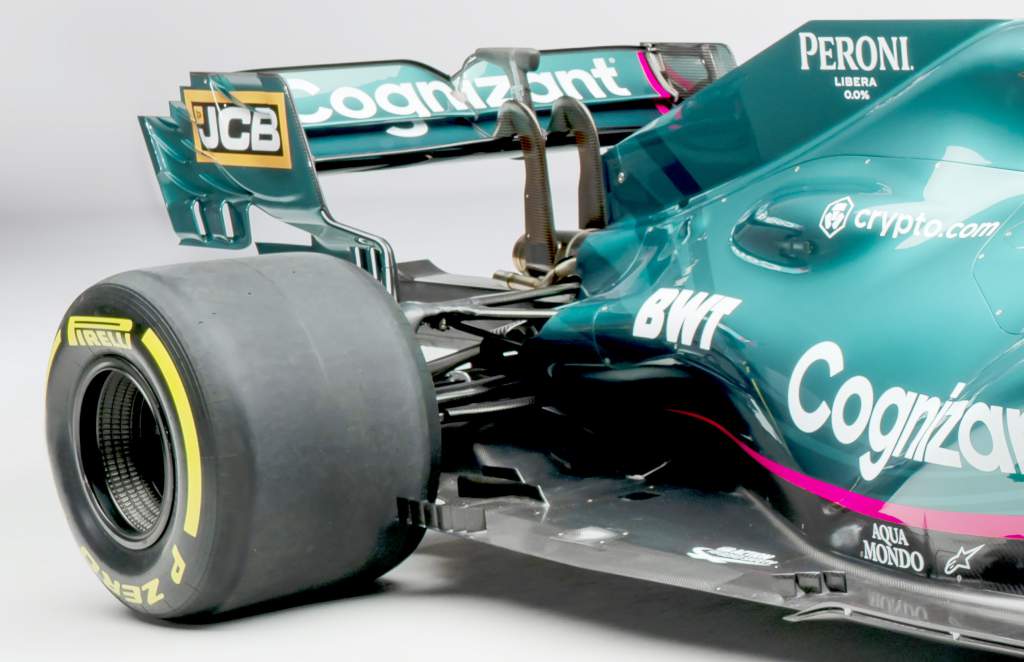
We can also see what Mercedes believed was its major step forward in 2020 – the reduced blockage rear suspension. It’s new to Aston Martin for this year but everyone is expecting it to be a decent step forward.
The bargeboards have also had some detail changes. Some of the vanes have got smaller, some bigger, some more twisted, some straighter. I could go on and on but the basic requirement for these is still the same as before regardless of the shapes.
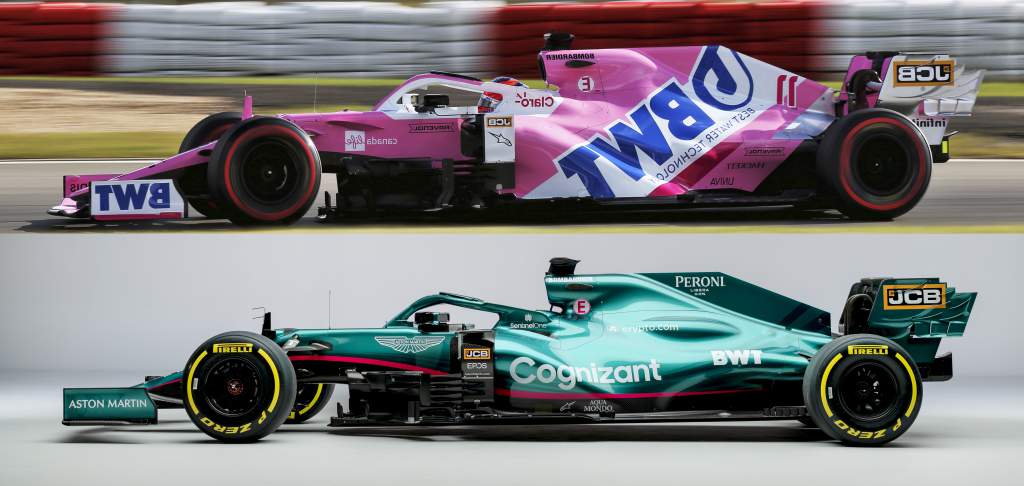
There might be a small change in the priorities of how they all work but they all function to scavenge the airflow out from underneath the bottom and sides of the chassis. This, in turn, helps the performance of the front wing by minimising the blockage behind it.
They also optimise the flow across the leading edge of the underfloor and improve the flow going around the undercut sidepod to help scavenge the airflow out from underneath the front corner of the floor. This generates a lower pressure under this part and allows the diffuser to work the rest of the underfloor harder, generating more downforce from the complete underfloor.
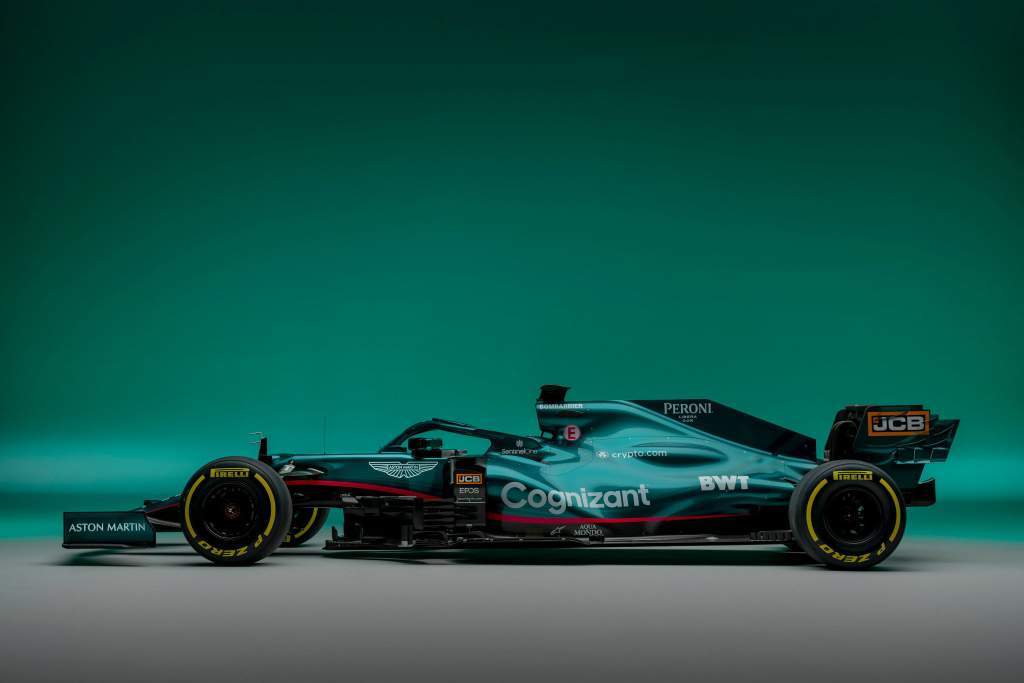
From the side view, we can see Aston Martin has been very aggressive with how the sidepod sweeps down very quickly to the Z of new title sponsor Cognizant’s logo. This is even more aggressive than on the Mercedes.
Also, the size of the bulge on the engine cover just below the Peroni decal shows that the team has cling-wrapped everything under the bodywork even tighter. This is all OK and will improve the airflow through the Coke bottle area inside the rear tyre, just as long as it cools sufficiently.
By bringing in Sebastian Vettel to partner Lance Stroll, Aston Martin has stated its desire to race at the front and be in a regular position to score podiums if not the odd win.
I don’t think Vettel has forgotten how to drive and he will thrive in the team environment at Aston Martin. As for Lance Stroll, he is no slouch. He might be the big boss’s son, but he deserves his place on the grid and can only benefit from Vettel’s experience.
It’s always very difficult to make predictions about a car, but that doesn’t stop me trying. I like what I see here and the attention to detail is right up there.
Now, with the regulations so restricting, it’s the sum of all those small details that adds up to the performance of any car. I genuinely think that this AMR21 is at least as good as a certain very early predecessor.
You can even see the similar bulge on the engine cover. Not bad for 30 years ago!







